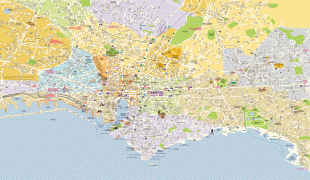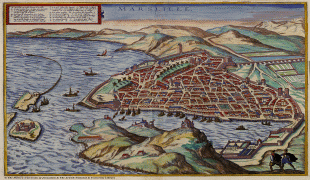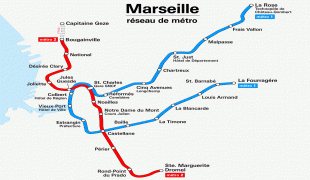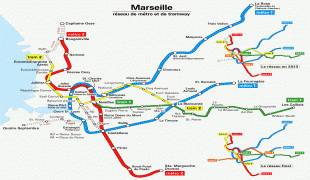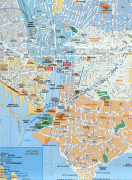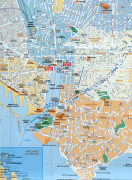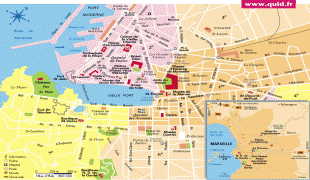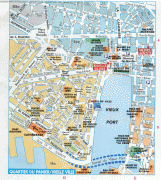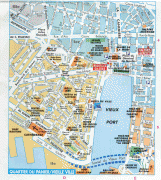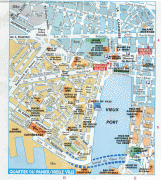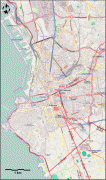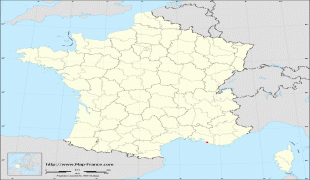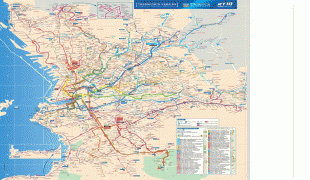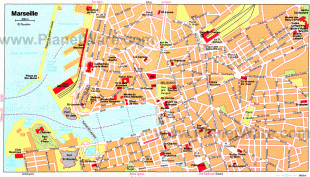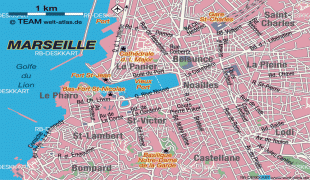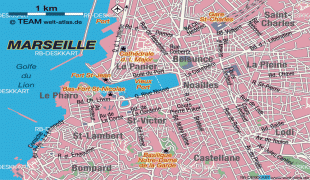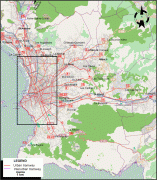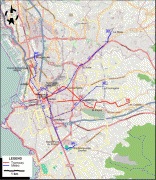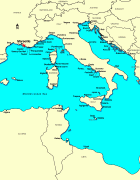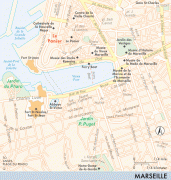Marseille
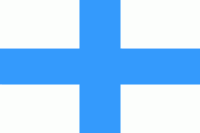 |
Marseille is the second most populous city in France, with 870,321 inhabitants in 2020 (Jan. census) over a municipal territory of 241 km2. Together with its suburbs and exurbs, the Marseille metropolitan area, which extends over 3972 km2, had a population of 1,879,601 at the Jan. 2020 census, the third most populated in France after those of Paris and Lyon. The cities of Marseille, Aix-en-Provence, and 90 suburban municipalities have formed since 2016 the Aix-Marseille-Provence Metropolis, an indirectly elected metropolitan authority now in charge of wider metropolitan issues, with a population of 1,903,173 at the Jan. 2020 census.
Founded around 600 BC by Greek settlers from Phocaea, Marseille is the oldest city in France, as well as one of Europe's oldest continuously inhabited settlements. It was known to the ancient Greeks as Massalia (Μασσαλία) and to Romans as Massilia. The name Massalia probably derives from μᾶζα (mass, lump, barley-cake), the "lump" being the La Garde rock. Marseille has been a trading port since ancient times. In particular, it experienced a considerable commercial boom during the colonial period and especially during the 19th century, becoming a prosperous industrial and trading city. Nowadays the Old Port still lies at the heart of the city, where the manufacture of Marseille soap began some six centuries ago. Overlooking the port is the Basilica of Notre-Dame-de-la-Garde or "Bonne-mère" for the people of Marseille, a Romano-Byzantine church and the symbol of the city. Inherited from this past, the Grand Port Maritime de Marseille (GPMM) and the maritime economy are major poles of regional and national activity and Marseille remains the first French port, the second Mediterranean port and the fifth European port. Since its origins, Marseille's openness to the Mediterranean Sea has made it a cosmopolitan city marked by cultural and economic exchanges with Southern Europe, the Middle East, North Africa and Asia. In Europe, the city has the third largest Jewish community after London and Paris.
In the 1990s, the Euroméditerranée project for economic development and urban renewal was launched. New infrastructures and renovations were carried out in the 2000s and 2010s: the tramway, the renovation of the Hôtel-Dieu into a luxury hotel, the expansion of the Velodrome Stadium, the CMA CGM Tower, as well as other quayside museums such as the Museum of Civilisations of Europe and the Mediterranean (MuCEM). As a result, Marseille now has the most museums in France after Paris. The city was named European Capital of Culture in 2013 and European Capital of Sport in 2017. Home of the association football club Olympique de Marseille, one of the most successful and widely supported clubs in France, Marseille has also hosted matches at the 1998 World Cup and Euro 2016. It is also home to several higher education institutions in the region, including the University of Aix-Marseille.
Marseille is the third-largest metropolitan area in France after Paris and Lyon. To the east, starting in the small fishing village of Callelongue on the outskirts of Marseille and stretching as far as Cassis, are the Calanques, a rugged coastal area interspersed with small fjord-like inlets. Farther east still are the Sainte-Baume (a 1147 m mountain ridge rising from a forest of deciduous trees), the city of Toulon and the French Riviera. To the north of Marseille, beyond the low Garlaban and Etoile mountain ranges, is the 1011 m Mont Sainte Victoire. To the west of Marseille is the former artists' colony of l'Estaque; farther west are the Côte Bleue, the Gulf of Lion and the Camargue region in the Rhône delta. The airport lies to the north west of the city at Marignane on the Étang de Berre.
The city's main thoroughfare (the wide boulevard called the Canebière) stretches eastward from the Old Port to the Réformés quarter. Two large forts flank the entrance to the Old Port—Fort Saint-Nicolas on the south side and Fort Saint-Jean on the north. Farther out in the Bay of Marseille is the Frioul archipelago which comprises four islands, one of which, If, is the location of Château d'If, made famous by the Dumas novel The Count of Monte Cristo. The main commercial centre of the city intersects with the Canebière at Rue St Ferréol and the Centre Bourse (one of the city's main shopping malls). The centre of Marseille has several pedestrianised zones, most notably Rue St Ferréol, Cours Julien near the Music Conservatory, the Cours Honoré-d'Estienne-d'Orves off the Old Port and the area around the Hôtel de Ville. To the south east of central Marseille in the 6th arrondissement are the Prefecture and the monumental fountain of Place Castellane, an important bus and metro interchange. To the south west are the hills of the 7th and 8th arrondissements, dominated by the basilica of Notre-Dame de la Garde. Marseille's main railway station—Gare de Marseille Saint-Charles—is north of the Centre Bourse in the 1st arrondissement; it is linked by the Boulevard d'Athènes to the Canebière.
Map - Marseille
Map
Country - France
 |
 |
| Flag of France | |
Inhabited since the Palaeolithic era, the territory of Metropolitan France was settled by Celtic tribes known as Gauls during the Iron Age. Rome annexed the area in 51 BC, leading to a distinct Gallo-Roman culture that laid the foundation of the French language. The Germanic Franks formed the Kingdom of Francia, which became the heartland of the Carolingian Empire. The Treaty of Verdun of 843 partitioned the empire, with West Francia becoming the Kingdom of France in 987. In the High Middle Ages, France was a powerful but highly decentralised feudal kingdom. Philip II successfully strengthened royal power and defeated his rivals to double the size of the crown lands; by the end of his reign, France had emerged as the most powerful state in Europe. From the mid-14th to the mid-15th century, France was plunged into a series of dynastic conflicts involving England, collectively known as the Hundred Years' War, and a distinct French identity emerged as a result. The French Renaissance saw art and culture flourish, conflict with the House of Habsburg, and the establishment of a global colonial empire, which by the 20th century would become the second-largest in the world. The second half of the 16th century was dominated by religious civil wars between Catholics and Huguenots that severely weakened the country. France again emerged as Europe's dominant power in the 17th century under Louis XIV following the Thirty Years' War. Inadequate economic policies, inequitable taxes and frequent wars (notably a defeat in the Seven Years' War and costly involvement in the American War of Independence) left the kingdom in a precarious economic situation by the end of the 18th century. This precipitated the French Revolution of 1789, which overthrew the Ancien Régime and produced the Declaration of the Rights of Man, which expresses the nation's ideals to this day.
Currency / Language
| ISO | Currency | Symbol | Significant figures |
|---|---|---|---|
| EUR | Euro | € | 2 |
| ISO | Language |
|---|---|
| EU | Basque language |
| BR | Breton language |
| CA | Catalan language |
| CO | Corsican language |
| FR | French language |
| OC | Occitan language |






